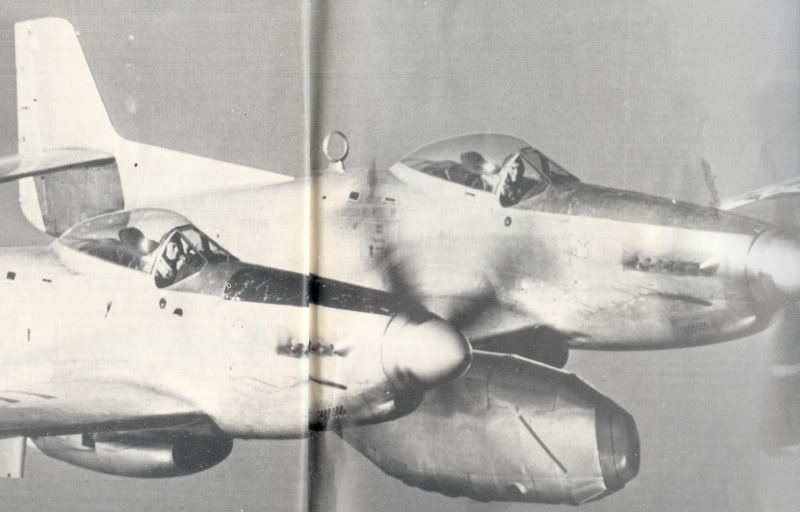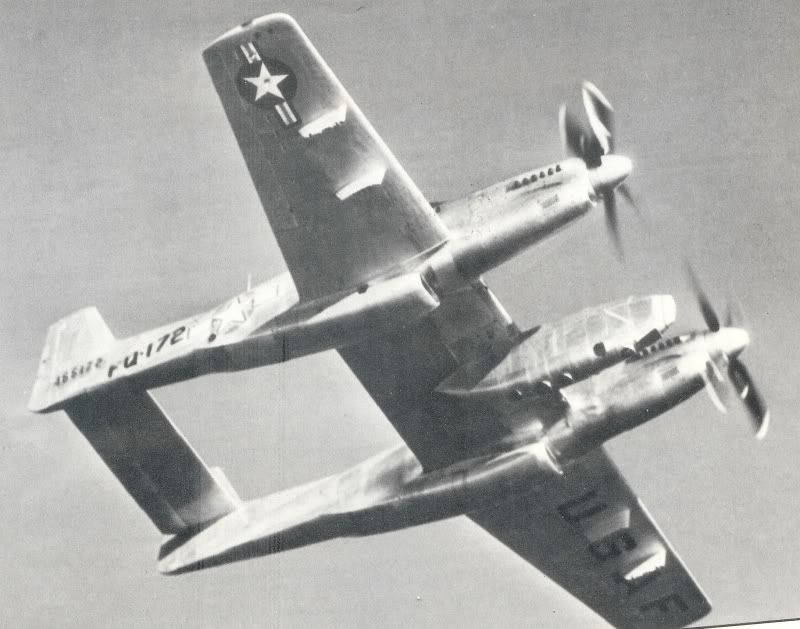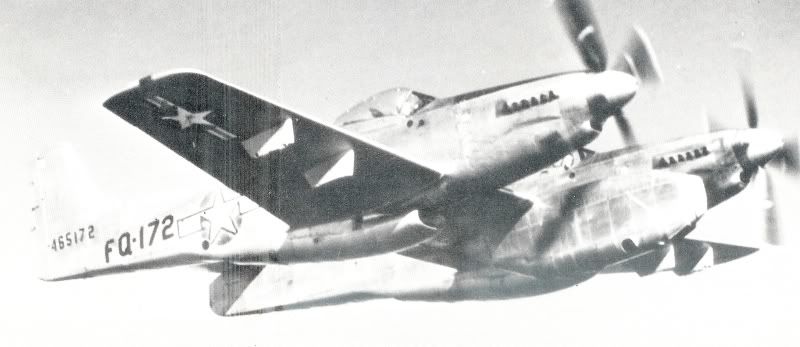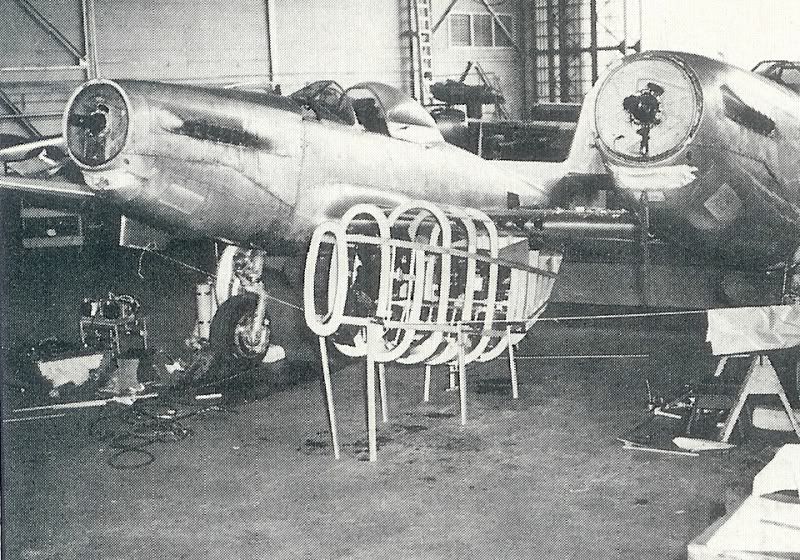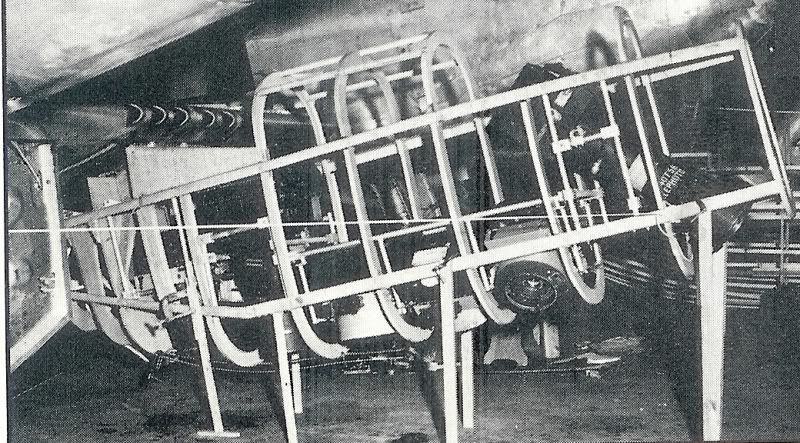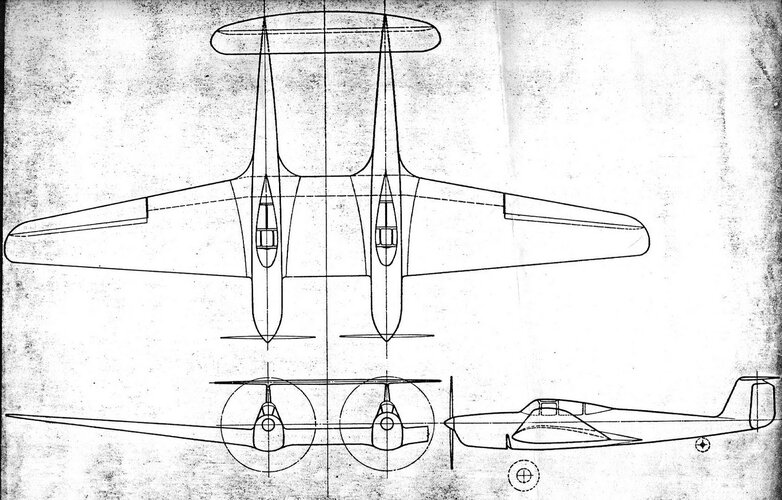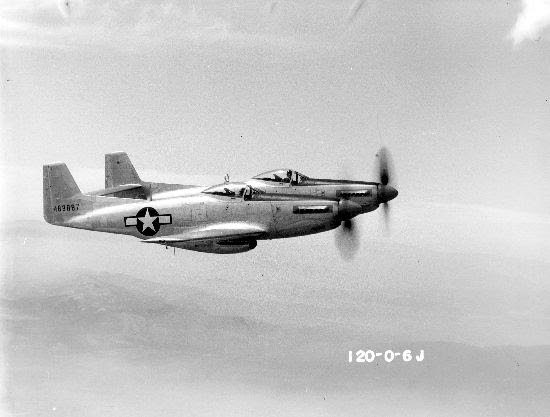Does anyone have any information on a possible P-51E Mustang?
I just ran across a reference to it in FLYING Magazine; September 1945; with the terse text:
"Between the D and the H, the E died on the design boards..."
The P-51D (NA-106) and P-51E (NA-107) began life in Jan 1943 as the six gun/Birdcage canopy P-51B/C modification. Original planning projected NA-106 for Inglewood/NA-107 at Dallas. NAA negotiated the MCR for the six gun wing just before MCR 258 for the Cockpit Enclosure, Sliding was executed.
The production breaks for NA-106/107 are well documented in the Preliminary Design General Assembly
106-900002 P-51D Major Assembly Breakdown. Between Jan 1 and March 15, when 9000002 was released, the actutal work on both canopy and new wing design had started and all production drawings were completed by mid-July, 1943. P51B-1-NA 43-12102 was delivered to the xperimental department for the cockpit mod. Two spare P-51B-1 fuselages were pulled to perform the exact cockpit mods as P-51D and P-51D-1. The wings were installed in the Experimental Department. P-51D-1 remained to begin installation of 55 gal fuse tank.
In September AAF decreed 'only 85 gal tanks will be accepted post Jan 1" and the P-51D and D-1 were assigned the first two numbers of the planned production break, namely 42-106539/540 but the project of planned B-1 fuselage basis for production was killed, NA-107 was killed, All funding and pooled parts were folded from NA-106 into P-51D-5 NA-109 and P-51B-10 NA-104; NA -107 funding was moved into NA-103 and NA-111.
In October a Change E.O. was approved to move the wing back 4" to accomodate the aft cg issues introduced by NA-106 85 gal requirement as well as 2x50 cal/600 round increase to aft cg issue - but by that time flight tests as Eglin stated that while deliterious at full combat weight, the P-51 was flyable until fuel reduced to 60 gal - and NAA/AAF agred to proceed 'as is',
The continuation of P-51B-5 moved to P-51B-10 and the P-51B-10 production skipped 42-106539/540 to 42-106541.
Summary - didn't die on the design boards. Somebody woke up and remembered that while NA-102 and 103 were the same airframe, NA and NT clearly differentiated between Inglewood and Dallas, so why not P-51D-5-NA and P-51D-5-NT?
The modified P-51B-1-NA and P-51D-NA were flight tested by AAF and Chilton in November/December 1943, but P-51D-1-NT was not delivered until December 31, 1943 and Chilton never flew it (at least not recorded in his logbook).
Take what you want and leave the rest.
Bill Marshall

